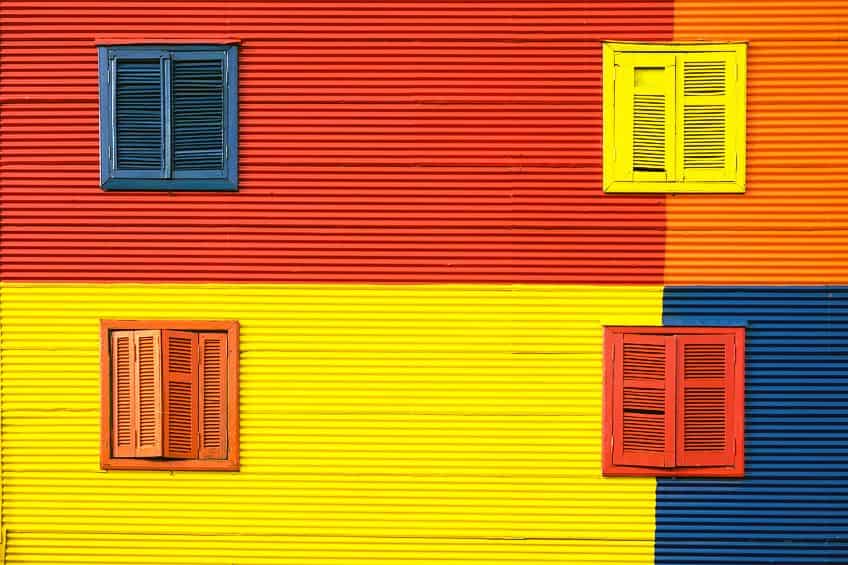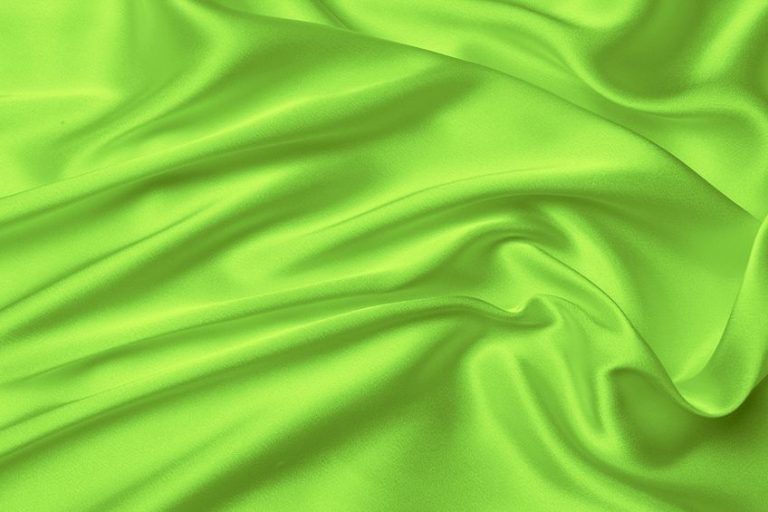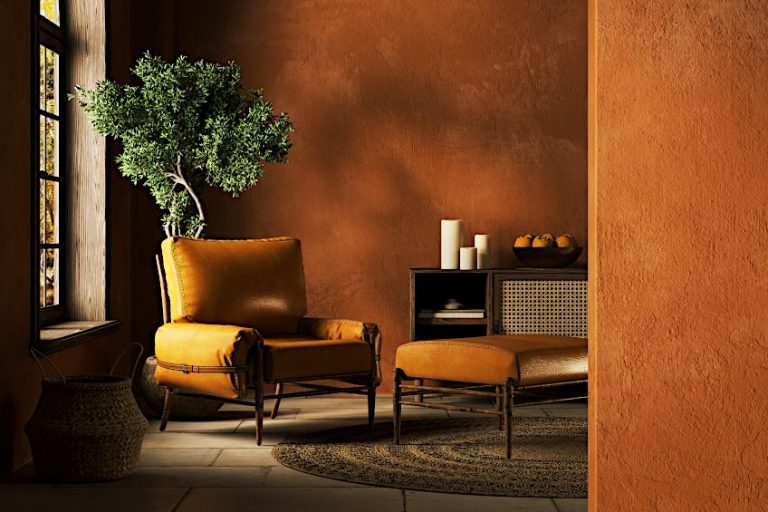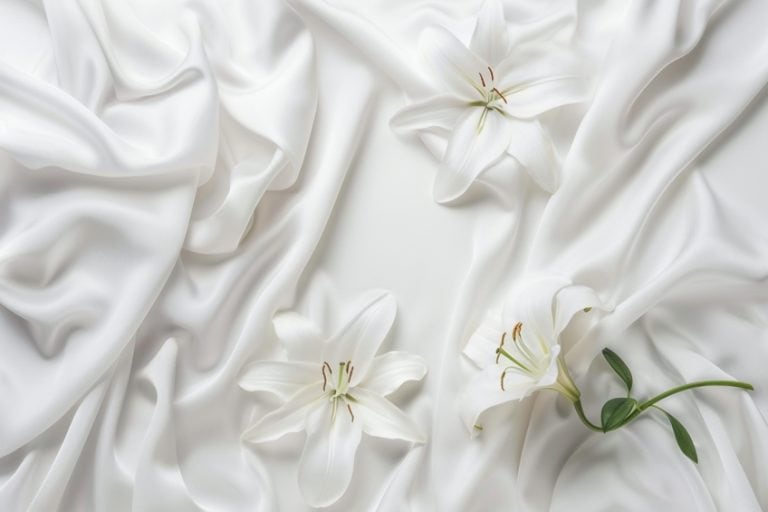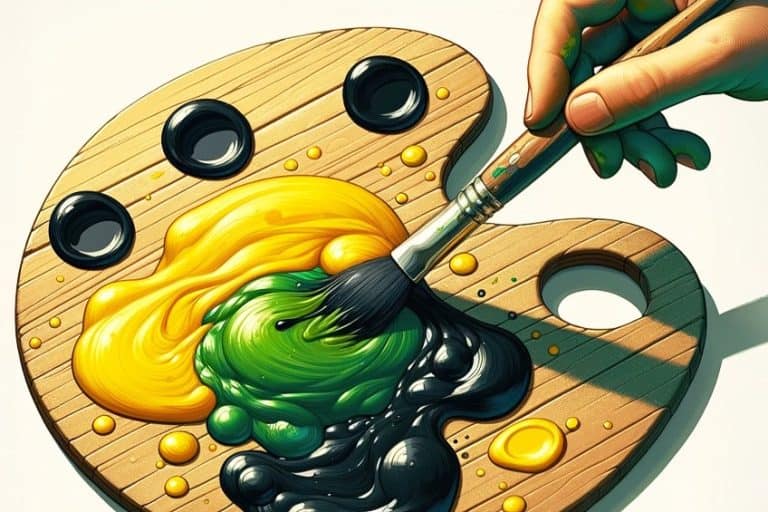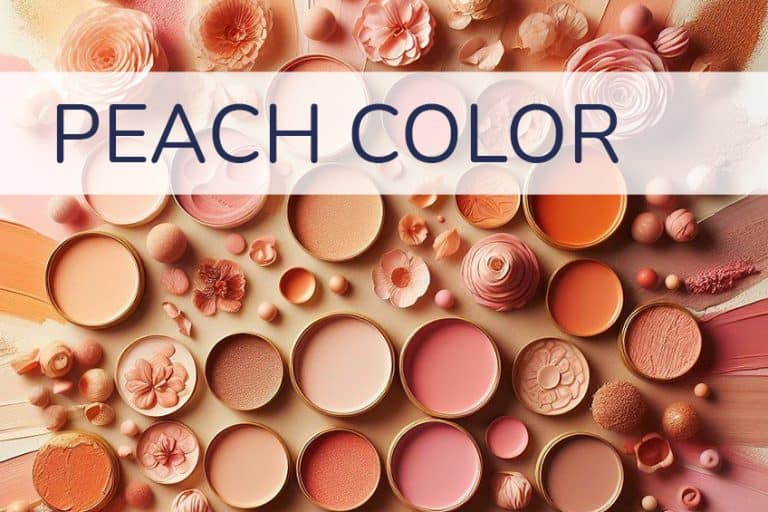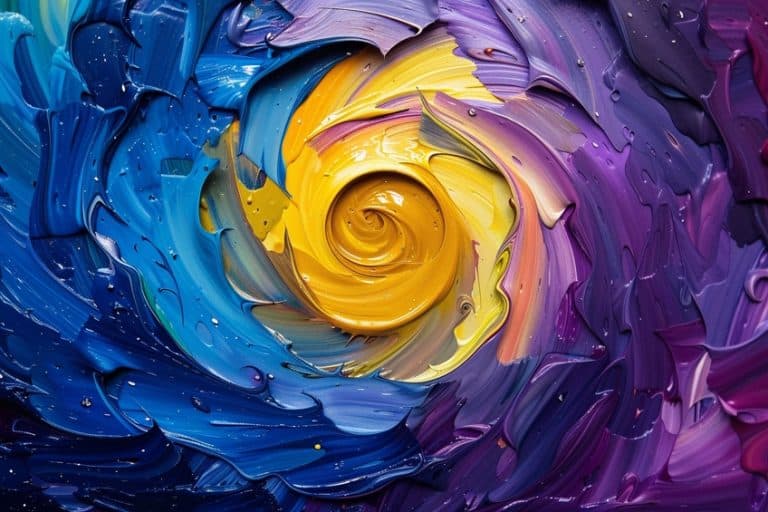Tetradic Colors – Using Colors That Attract Attention
When working with colors and developing the perfect color scheme, there is a lot more that goes into it than simply choosing your favorite colors. You need to do some research into color theory and color harmony to discover the various color combinations you can use. In this article, we will be dealing with one of the more challenging combinations known as tetradic colors. Read further to discover what types of tetradic color combinations there are, and how to use them.
What Are Tetradic Colors?
Before we delve into the discovery of tetradic color, we first need to have a look at the basics of color theory. We need to appreciate how colors work together and where the color wheel comes into the picture. So, what is the deal with color theory and where do tetradic colors come into the picture?
Tetradic Colors and Color Theory
If we start at the very beginning, we will be talking about your primary, secondary, and tertiary or intermediate colors. When focusing on the traditional system of colors, this would include red, yellow, and blue as your primary colors. You cannot use any other color to create these hues, but you can use them to create your secondary colors, which include the following.

- Red and yellow makes orange
- Red and blue makes purple
- Yellow and blue make green
The primary and secondary colors can then be combined to create tertiary or intermediate colors. Some examples include red-orange, yellow-green, yellow-orange, blue-green, blue-violet, and red-violet. These colors can then be represented within a color wheel, which visually helps you understand how colors relate to one another. So, a basic color wheel will contain 12 hues, all positioned around a central point. The three primary hues will be positioned at an equal distance around the wheel. The secondary colors will then be spaced equally in between these colors, and finally, you have the tertiary colors.
Of course, you also get much larger color wheels that contain many more colors.
You should also note that there are different color models, the above is the traditional method most of us learned at school. However, there are other color models, some of these include your RGB color model and the CMYK color model. These contain different primary and secondary colors and are used for different purposes.

The RGB color system comes into play when looking at computer graphics, as the colors being used are not tangible and are based on the light spectrum. The primary hues here are red, green, and blue, while the secondary hues are cyan, magenta, and green. The CMYK system, also known as the modern color wheel, is applied in the printing industry, where color pigments are used to create colors. The primary hues include cyan, magenta, and yellow. The “K” represents the black ink used. This forms secondary colors that include red, green, and blue.
Color Terminology
When dealing with colors, there are a few terms you will come across, and understanding these can help you create better color combinations and mixes. The first term is “hue”, which most of us interpret as another term for color. However, the word “color” is more of a general term for every hue, shade, and tint, while hue refers particularly to a specific color. Below are a few more terms you should know.

- Shade: This is when you add black to a color to create a shade.
- Tint: You create a tint when you mix white with a color.
- Tone: A tone is when gray has been added to a pure color, which makes the color seem duller.
- Value: The value of a color involves how light or dark a specific color is.
- Chroma: A hue with a high chroma has no black or white added to it and is more vibrant and pure.
- Saturation: The purity and intenseness of a color relative to its brightness and is often used interchangeably with chroma.
Color Combinations
To create color harmony, you need to understand the various color combinations. To create a balance between colors, they need to be used properly to form color palettes that are pleasing to look at and do not overwhelm the viewer. Tetradic colors are one of the color combinations, but before we get into more details about this, let us look at some of the other color combinations available.

- Monochromatic color combinations: When taking a single, for example, blue, you create a color combination using lighter and darker colors of the single blue hue. This creates a harmonious look that is easy to pull off.
- Complementary color combinations : These colors are found on opposing sides of the color wheel. For example, blue and orange. When paired, these colors create contrast.
- Analogous color combinations: Neighboring colors on the color wheel form an analogous color palette that is pleasing to the eye.
- Triadic color combinations: Another contrasting color combination that uses three colors equally spaced and forming a triangle shape on the color wheel.
The Different Types of Tetradic Colors
Three-color combinations are challenging enough to work with, so adding another color into the mix makes it even more difficult to apply. The term “tetradic” itself means a group of four. So, tetradic colors involve a four-hue combination. These four colors are spaced equally around the color wheel and consist of two sets of complementary hues, which are also known as double complementary colors.
Tetradic colors can be created in two ways.

- Square tetradic colors
- Triangular tetradic colors
A rectangle tetradic color scheme provides a lot of contrast but can also work harmoniously if used properly, creating a balance between warm and cool colors. In a color scheme, you would choose one dominant hue, which is used the most, while the other colors play a more supporting role, also known as accent colors. When choosing your main color, the remaining three colors are spaced at 60-degree intervals, for example, 60 degrees, 180 degrees, and 240 degrees from the base color. A square tetradic color scheme follows the same principles, but the colors are spaced 90 degrees apart from the base color.
You have six color scheme options in a single-color wheel.

The same principle applies to whatever color model you are using. However, the color palette will vary between color models, and there are numerous possibilities and combinations when using a more complex color wheel. You also need to take into consideration that you can use various shades, tints, and tones for each color, and play around with the saturation and values. Also, you can easily determine these color combinations, by using online tools that produce them for you. Let us look at some tetradic color scheme examples from different color models.
Square Tetradic Color Combinations for the RYB Color Model
In this case, you will have three possibilities with a basic color wheel. These options will each include a primary color, a secondary color, and two tertiary or intermediate colors. In the table, you can see the first combination of red, green, yellow-orange (amber), and blue-purple (indigo). The other options are as follows:
- Yellow, purple, blue-green (teal), and red-orange (vermillion)
- Blue, orange, yellow-green (chartreuse), and red-purple (magenta)
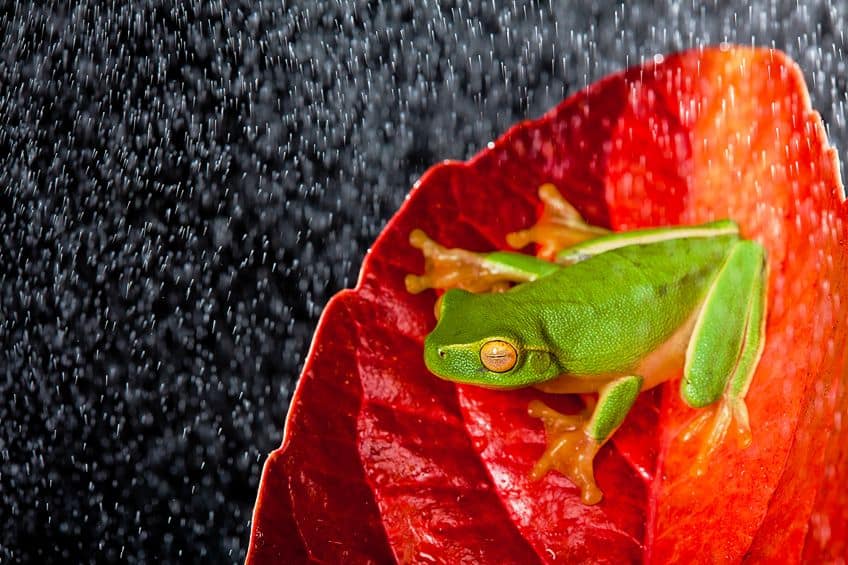
| Shade | Hex Code | CMYK Color Code (%) | RGB Color Code | Color |
| Red | #ff0000 | 0, 100, 100, 0 | 255, 0, 0 | |
| Green | #00ff00 | 100, 0, 100, 0 | 0, 255, 0 | |
| Yellow-Orange | #ffbf00 | 0, 25, 100, 0 | 255, 191, 0 | |
| Blue-Purple | #4b0082 | 42, 100, 0, 49 | 75, 0, 130 |
Square Tetradic Color Combinations for the RGB Color Model
Again, you have three possibilities, each with primary, secondary, and two tertiary or intermediate colors. As you can see, the ideas are similar, but the colors are a little different. Below in the table, we have again taken red as the main color, as they are primary colors in both models. This includes red, cyan, green-yellow, and blue-magenta (purple). The other two possibilities are as follows:
- Green, magenta, blue-cyan or azure, and orange
- Blue, yellow, green-cyan (spring green), and red-magenta (rose).

| Shade | Hex Code | CMYK Color Code (%) | RGB Color Code | Color |
| Red | #ff0000 | 0, 100, 100, 0 | 255, 0, 0 | |
| Cyan | #00ffff | 100, 0, 0, 0 | 0, 255, 255 | |
| Green-Yellow | #adff2f | 32, 0, 82, 0 | 173, 255, 47 | |
| Blue-Magenta | #800080 | 0, 100, 0, 50 | 128, 0, 128 |
Rectangle Tetradic Color Combinations for the RYB Color Model
These double complementary colors have a few more options, as there are six possibilities in a single color wheel. You can get two primary colors, with their two secondary colors, which provide three different options. You also have the option of four tertiary colors, which provides three different choices.
Two Primary and Two Secondary Colors
This is quite easy to determine, as you take two primary ones, such as red and blue, and this will then be paired with orange and green, which you can see in the bale below. The other two options include the following:
- Yellow, blue, purple, and orange
- Yellow, red, purple, and green

| Shade | Hex Code | CMYK Color Code (%) | RGB Color Code | Color |
| Red | #ff0000 | 0, 100, 100, 0 | 255, 0, 0 | |
| Blue | #0000ff | 100, 100, 0, 0 | 0, 0, 255 | |
| Orange | #ffa500 | 0, 35, 100, 0 | 255, 165, 0 | |
| Green | #00ff00 | 100, 0, 100, 0 | 0, 255, 0 |
Tertiary Color Combinations
In this color combination, you will find three options. The first is a combination of the four tertiary colors you find in an RYB color model. This includes green-yellow, red-violet, and violet-blue. The others include the following:
- Violet-blue, blue-green, yellow-orange, and orange-red
- Red-violet, orange-red, green-yellow, and blue-green

| Shade | Hex Code | CMYK Color Code (%) | RGB Color Code | Color |
| Yellow-Green | #9acd32 | 25, 0, 76, 20 | 154, 205, 50 | |
| Yellow-Orange | #ffae42 | 0, 32, 74, 0 | 255, 174, 66 | |
| Red-Violet | #c71585 | 0, 89, 33, 22 | 199, 21, 133 | |
| Violet-Blue | #324ab2 | 72, 58, 0, 30 | 50, 74, 178 |
Rectangle Tetradic Color Combinations for the RGB Color Model
The principles stay the same, but the colors are different. This means one of the two primary and two secondary options will be red, yellow, cyan, and blue. The other two options you can choose will be as follows:
- Green, cyan, magenta, and red
- Magenta, blue, green, and yellow

| Shade | Hex Code | CMYK Color Code (%) | RGB Color Code | Color |
| Red | #ff0000 | 0, 100, 100, 0 | 255, 0, 0 | |
| Yellow | #ffff00 | 0, 0, 100, 0 | 255, 255, 0 | |
| Cyan | #00ffff | 100, 0, 0, 0 | 0, 255, 255 | |
| Blue | #0000ff | 100, 100, 0, 0 | 0, 0, 255 |
Tertiary Colors
The six tertiary colors in the RGB model are red-yellow (orange), red-magenta (rose), blue-magenta (violet), blue-cyan (azure), green-cyan (spring green), and green-yellow (chartreuse). In the table below, you can see a tetradic combination of red-magenta, blue-magenta, green-cyan, and green-yellow. The other combinations are as follows:
- Orange, chartreuse, azure, and violet
- Azure, spring green, orange, and rose

| Shade | Hex Code | CMYK Color Code (%) | RGB Color Code | Color |
| Rose | #ff007f | 0, 100, 50, 0 | 255, 0, 127 | |
| Violet | #8000ff | 50, 100, 0, 0 | 128, 0, 255 | |
| Spring Green | #00ff80 | 100, 0, 50, 0 | 0, 255, 128 | |
| Chartreuse | #7fff00 | 50, 0, 100, 0 | 127, 255, 0 |
How to Use Tetradic Color Combinations
Since you are dealing with double complementary colors, the overall effect can be quite vibrant and eye-catching, even if you use lighter or pastel colors. So, you will want to choose this type of color combination if you want to make a bold statement, which is why they need to be used carefully to prevent the color palette from overwhelming the viewer.
The four colors combined create the best contrast and balance, to achieve visual interest and depth in a design.
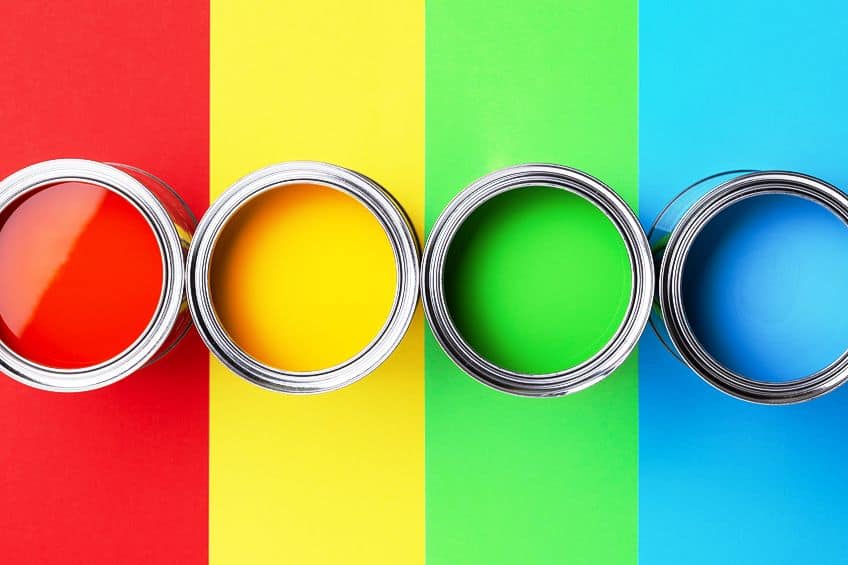
Since there is such contrast, it is one of the more difficult color combinations to work with, but it also provides a richer, more complex, and fun effect. To work with this type of color combination, remember to choose your main color, and use the other colors as your accents, or in less quantities. If you use all colors in equal quantities, it will create visual mayhem and overstimulate the viewer. Below are some ideas for how to use a tetradic color scheme.
Creating a Balanced Look
To create a more balanced look, you can also consider toning down the colors, using different tints and shades can help to soften the look. You can also try using the colors against a neutral background, which helps to tone down the overall effect. As an interior design example, consider a neutral-based room, but added to the space, you can include vibrant colors using accessories like cushions, rugs, or furniture. This adds a pop of color, without taking over the space.
Using Cool and Warm Hues
You will always have contrasting hues and temperatures when using tetradic colors. Working with the same amount of cool and warm colors can be challenging. Even the slightest difference might be seen or even felt as something not quite right. If you understand colors, you can create a combination containing equal amounts of color, which will produce a lively effect.
However, to make sure the color palette you choose is more balanced, consider choosing a dominant color bias of either warm or cool, and use the others more sparingly.
Keep Your Values and Chroma Similar
Since this color palette already has the potential to be chaotic, it is best to keep the values and chroma similar. So, if you are going to create a more subdued effect for one color, make sure to apply it to the entire color palette. If you are going for a bold look, make sure all the colors are balanced. You can also try muting the colors to create more of a pastel look, which keeps the contrast but makes it easier to look at.
Tetradic Color Schemes
Below are two tetradic color scheme examples, the first one is a bold combination, while the second is more subdued with pastel hues. This is just to help and show you how you can manipulate the colors to create different looks.
Bold Color Combination
When looking at this color combination, you can feel the liveliness. It has been documented that our brains have a more intense reaction to bold colors, and we remember them more easily than more subdued colors. Remember, colors also have meaning, so you can use the bold combination as an emotional tool.

| Shade | Hex Code | CMYK Color Code (%) | RGB Color Code | Color |
| Coral | #ff7f50 | 0, 50, 69, 0 | 255, 127, 80 | |
| Yellow | #ffd700 | 0, 16, 100, 0 | 255, 215, 0 | |
| Violet | #8000ff | 50, 100, 0, 0 | 128, 0, 255 | |
| Kelly Green | #4cbb17 | 59, 0, 88, 27 | 76, 187, 23 |
Pastel Color Combination
This color combination is much easier on the eyes and can be incorporated into any type of design, from graphics to home décor. You will notice this tetradic color scheme example does not jump out at you quite like the one above.

| Shade | Hex Code | CMYK Color Code (%) | RGB Color Code | Color |
| Soft Orange | #f3d7b6 | 0, 12, 25, 5 | 243, 215, 182 | |
| Soft Green | #b4f3b7 | 26, 0, 25, 5 | 180, 243, 183 | |
| Soft Magenta | #f3b4f1 | 0, 26, 1, 5 | 243, 180, 241 | |
| Soft Cyan | #b4f1f3 | 26, 1, 0, 5 | 180, 241, 243 |
If you are looking for a color scheme that attracts attention and provides numerous possibilities, then tetradic colors are what you are looking for. The color schemes are fun, exciting, and vibrant, but do need to be used carefully. However, if you follow all the guidelines, you can create a bold and striking design, whether it is for a company logo or website, or even just to spice up your home!
Frequently Asked Questions
What Are Tetradic Colors?
A tetradic color scheme uses four colors that involve two sets of complementary colors. There are two types which are known as a square and a rectangle tetradic color combination. Choose your main color, for example red, and from there you can determine the other colors, which in general, will be a cyan, green, and magenta.
What Are Tetradic Colors Also Known As?
Since tetradic colors use two sets of complementary colors, they are also referred to as double complementary colors.
What Is the Most Prominent Feature of Tetradic Colors?
When using a tetradic color scheme, the one feature that is most prominent is the way that the colors attract attention. The four-color combination uses vibrant and bold colors to do this. This is why it must be used carefully to avoid creating a look that is overwhelming or chaotic.
In 2005, Charlene completed her Wellness Diplomas in Therapeutic Aromatherapy and Reflexology from the International School of Reflexology and Meridian Therapy. She worked for a company offering corporate wellness programs for a couple of years, before opening up her own therapy practice. It was in 2015 that a friend, who was a digital marketer, asked her to join her company as a content creator, and this is where she found her excitement for writing.
Since joining the content writing world, she has gained a lot of experience over the years writing on a diverse selection of topics, from beauty, health, wellness, travel, and more. Due to various circumstances, she had to close her therapy practice and is now a full-time freelance writer. Being a creative person, she could not pass up the opportunity to contribute to the Art in Context team, where is was in her element, writing about a variety of art and craft topics. Contributing articles for over three years now, her knowledge in this area has grown, and she has gotten to explore her creativity and improve her research and writing skills.
Charlene Lewis has been working for artincontext.org since the relaunch in 2020. She is an experienced writer and mainly focuses on the topics of color theory, painting and drawing.
Learn more about Charlene Lewis and the Art in Context Team.
Cite this Article
Charlene, Lewis, “Tetradic Colors – Using Colors That Attract Attention.” Art in Context. September 11, 2023. URL: https://artincontext.org/tetradic-colors/
Lewis, C. (2023, 11 September). Tetradic Colors – Using Colors That Attract Attention. Art in Context. https://artincontext.org/tetradic-colors/
Lewis, Charlene. “Tetradic Colors – Using Colors That Attract Attention.” Art in Context, September 11, 2023. https://artincontext.org/tetradic-colors/.


